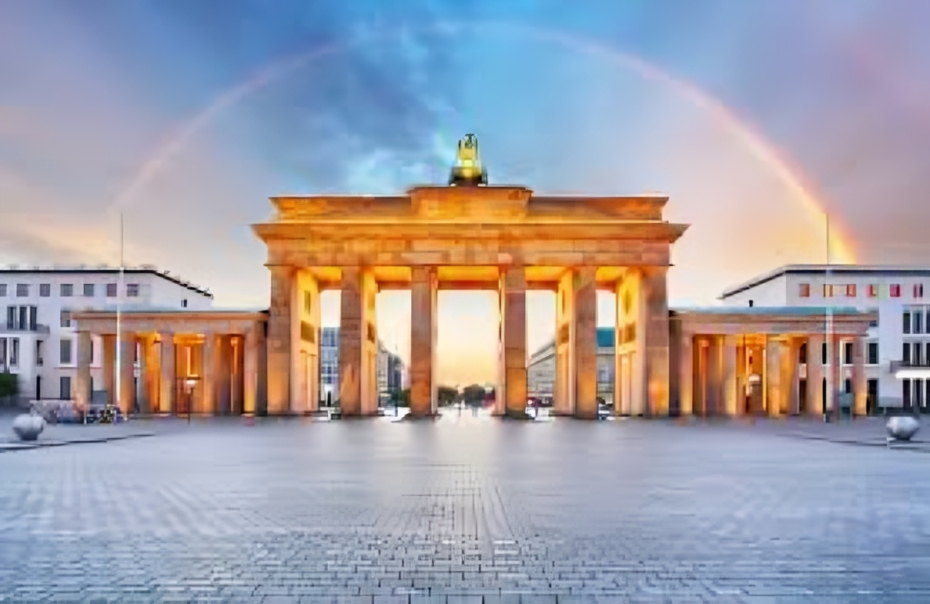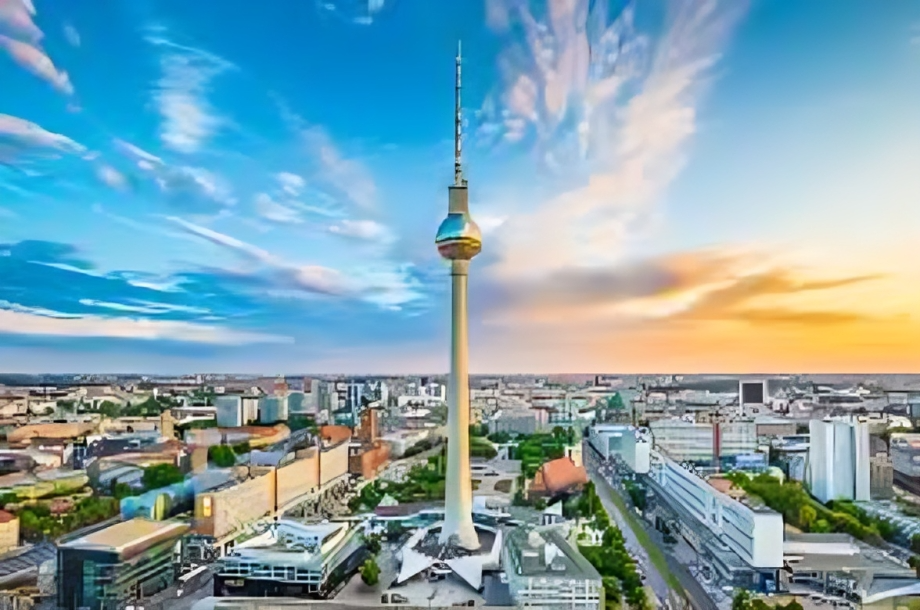Germany, or Deutschland as the locals affectionately call it, is a tapestry woven from centuries of history and culture. From medieval castles that whisper tales of kings to vibrant cities where modernity meets tradition, this country has something for everyone. Each city holds secrets waiting to be uncovered—stories etched in stone and echoes of the past reverberating through cobblestone streets.
Traveling through Germany means stepping into a living museum. Every landmark reveals another layer of its rich heritage. Whether you’re wandering through bustling markets or exploring serene landscapes dotted with historical sites, you’ll find that each corner tells a compelling story about the nation’s journey through time.
Join us as we embark on an adventure to discover some of Deutschland most iconic historical landmarks. These places are not just attractions; they are milestones marking significant events that shaped both Germany’s identity and its role in world history.
Top historical landmarks to visit in Germany

Germany is a treasure trove of historical landmarks, each steeped in stories that echo through time. The majestic Brandenburg Gate stands as a symbol of unity and peace, drawing visitors with its neo-classical architecture.
Neuschwanstein Castle enchants all who see it. Nestled among the Bavarian mountains, this fairy-tale fortress inspired Disney’s iconic castles.
The Berlin Wall Memorial captures the essence of division and reunification. It holds poignant reminders of Germany’s tumultuous past.
Cologne Cathedral dominates the skyline with its towering spires. This Gothic masterpiece showcases intricate stained glass and remarkable craftsmanship.
Nuremberg Castle offers a glimpse into medieval life, surrounded by fortified walls that whisper tales of knights and royalty.
Exploring these sites provides an unforgettable journey through Deutschland rich tapestry of history, inviting you to connect with both the past and present.
A. Brandenburg Gate
The Brandenburg Gate stands as a powerful symbol of Germany’s tumultuous history. Located in Berlin, it dates back to the 18th century and was commissioned by King Frederick William II. Originally designed as a neoclassical triumphal arch, its grand structure features twelve iconic columns.
Throughout the years, this landmark has witnessed significant events. From Napoleon’s triumphant march to its role during the Cold War, each chapter adds depth to its narrative.
Visitors often marvel at its majestic presence while strolling through Pariser Platz. Illuminated at night, the gate offers an enchanting view that captivates both locals and tourists alike.
Today, it serves not just as a historical monument but also as a gathering point for celebrations and protests alike. The spirit of unity resonates here, reminding all who visit of Germany’s resilience and progress over time.
B. Neuschwanstein Castle
Neuschwanstein Castle is a fairy tale come to life. Nestled in the Bavarian Alps, this stunning structure draws millions of visitors each year. Its picturesque towers and breathtaking surroundings create an enchanting atmosphere.
Commissioned by King Ludwig II in the 19th century, the castle reflects his romantic vision and fascination with medieval architecture. The interiors are equally impressive, adorned with elaborate murals and intricate woodwork that transport you back in time.
As you wander through its halls, you can feel the weight of history. Each room tells a story about Ludwig’s dreams and aspirations. The castle was never fully completed but remains an iconic symbol of Germany’s heritage.
The surrounding landscape adds another layer of beauty to your visit. Hiking trails offer panoramic views that enhance the experience, making it a must-see destination for anyone exploring Deutschland rich historical tapestry.
C. Berlin Wall Memorial
The Berlin Wall Memorial stands as a poignant reminder of Germany’s divided past. Once, it separated families and friends, casting a shadow over the nation’s spirit. Today, it tells stories of resilience and hope.
At this site, you can explore an extensive display that includes original wall segments and watchtowers. The memorial stretches along Bernauer Straße, where many dramatic escape attempts unfolded.
Visitors often find themselves captivated by the documentation center nearby. It offers insights into the struggles faced during the Cold War era.
Walking through this historical landmark evokes deep emotions—a blend of sorrow for what was lost and admiration for those who fought for reunification. It’s more than just a monument; it’s an invitation to reflect on unity in diversity amid turbulent times.
Whether you’re standing before the remnants or reading personal accounts from that period, each step taken here resonates with history’s weighty lessons.
D. Cologne Cathedral
Cologne Cathedral, or Kölner Dom, stands as a stunning testament to Gothic architecture. With its twin spires reaching nearly 157 meters, it’s one of the tallest cathedrals in Europe.
Construction began in 1248 and took over six centuries to complete. Each stone tells a story of dedication and artistry that transcends generations. The intricate façade is adorned with statues and carvings, captivating all who approach.
Inside, visitors are greeted by soaring ceilings and breathtaking stained glass windows that illuminate the space with vibrant colors. A sense of reverence fills the air as you walk among relics dating back centuries.
The cathedral isn’t just an architectural marvel; it also houses the Shrine of the Three Kings. This sacred site is believed to hold the remains of the Magi from Christian tradition.
A visit here is more than sightseeing; it’s stepping into a living history that continues to inspire awe today.
E. Nuremberg Castle
Nuremberg Castle stands as a striking symbol of the city’s medieval heritage. Perched high on a hill, it offers panoramic views that reveal the sprawling urban landscape below.
Built in the 11th century, this formidable fortress was once home to Holy Roman Emperors. Its architecture combines various styles, showcasing its evolution over centuries.
Visitors can explore intricate towers and sturdy walls. The deep history resonates as you wander through its ancient corridors.
The castle also houses intriguing museums that delve into Nuremberg’s past, including artifacts from the Middle Ages. Each exhibit whispers stories of trials and triumphs.
As you walk along cobblestone paths leading to the castle grounds, imagine knights in armor and grand banquets held long ago. Nuremberg Castle is not just a sight; it’s an experience steeped in time.
Significance and background of each landmark
The Brandenburg Gate stands as an iconic symbol of unity. Originally built in the 18th century, it marked the entrance to Berlin and has witnessed numerous historical events, including parades and protests.
Neuschwanstein Castle captures the imagination with its fairy-tale architecture. Commissioned by King Ludwig II in the 19th century, this stunning fortress represents romanticism and serves as a tribute to Wagner’s operas.
The Berlin Wall Memorial is a poignant reminder of division. Once separating East and West Berlin, its remnants evoke stories of struggle for freedom during a turbulent era.
Cologne Cathedral impresses with its Gothic splendor. Construction began in 1248, making it one of Germany’s most recognizable landmarks. Its twin spires soar high above the cityscape.
Nuremberg Castle reflects medieval strength and power. This formidable structure played an essential role throughout history, from royal residences to significant political meetings that shaped Germany’s future.
Tips for visiting these landmarks
Visiting historical landmarks in Deutschland can be an unforgettable experience. Start by planning your trip during off-peak seasons to avoid large crowds. This will allow you to soak in the history without feeling rushed.
Always check opening hours ahead of time. Some sites may have restricted access on certain days or holidays, which could affect your plans.
Consider joining a guided tour for deeper insights into each landmark’s significance. Local guides often share fascinating stories that aren’t found in guidebooks.
Wear comfortable shoes; you’ll likely do a lot of walking and exploring. Many sites require some climbing or navigating uneven terrain.
Capture memories but remember to be respectful of the surroundings, especially at solemn historic sites like the Berlin Wall Memorial. Take time to enjoy nearby cafes or parks—these spots often tell their own unique stories about Germany’s rich culture.
How these landmarks reflect Germany’s past and present
Germany’s historical landmarks serve as powerful reminders of its complex journey through time. Each site tells a unique story, reflecting the nation’s struggles and triumphs.
The Brandenburg Gate, once a symbol of division during the Cold War, now stands for unity and peace. It embodies Germany’s resilience and ability to overcome adversity.
Neuschwanstein Castle captures the imagination with its fairy-tale beauty while representing Bavaria’s rich royal history. This architectural marvel showcases romanticism in design that still enchants visitors today.
Conversely, the Berlin Wall Memorial bears witness to a painful past marked by separation. Its remnants evoke memories of struggle but also hope for reconciliation.
Cologne Cathedral inspires awe not just with its Gothic grandeur but also as a testament to centuries of craftsmanship and devotion.
These landmarks are more than mere structures; they encapsulate Germany’s evolving identity from turmoil towards progress in contemporary society.
Off-the-beaten-path historical sites to explore
Germany is home to countless hidden gems waiting to be discovered. One such treasure is the ancient town of Quedlinburg, with its timber-framed houses and cobbled streets. This UNESCO World Heritage site offers a glimpse into medieval life.
Another intriguing spot is the Wartburg Castle near Eisenach. It’s not just a stunning fortress but also where Martin Luther translated the New Testament. The history here resonates through its walls.
For those interested in Jewish heritage, visit Worms, known for its remarkable synagogue and historical significance in Jewish culture.
Consider exploring Bamberg. With its well-preserved old town and unique architecture, it feels like stepping back in time while sipping on local beer brewed since 1040! These locations provide a rich tapestry of stories woven into Deutschland past that often go unnoticed by tourists.
Conclusion
Germany, or Deutschland as it’s known in its native tongue, is a land brimming with history and culture. The historical landmarks scattered throughout the country not only tell stories of the past but also shape the identity of modern Germany. From grand castles to solemn memorials, each site serves as a testament to the trials and triumphs that have defined this nation.
Visiting these remarkable places offers more than just sightseeing; it’s an opportunity to connect with centuries of history. Each landmark—be it the iconic Brandenburg Gate or the majestic Neuschwanstein Castle—carries significance and unique narratives that reflect Germany’s evolution through time.
Deutschland For those adventurous travelers eager to delve deeper into German heritage, don’t forget about lesser-known sites waiting quietly off the beaten path. They whisper their own tales just as powerfully as their more famous counterparts.
Exploring these historic gems allows us to appreciate not only where we come from but also how far we’ve traveled together. As you walk through Berlin’s streets or gaze at Cologne Cathedral’s intricate details, remember that you’re tracing footsteps left by generations before you. Embrace your journey through Deutschland every visit enriches your understanding of this beautiful country’s rich tapestry woven over centuries.



